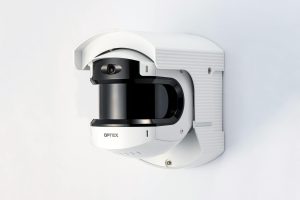How Weather Monitoring Improves Transportation Safety
If you’ve ever driven in inclement weather, you know how quickly road conditions can become treacherous. From heavy rain and snow to fog and high winds, extreme weather can make driving a terrifying experience. In fact, according to the Federal Highway Administration, more than 21% of car accidents are weather-related. This is why weather monitoring is crucial for improving transportation safety. By providing real-time updates on current and upcoming weather conditions, transportation operators can make better decisions, ultimately reducing accidents and saving lives.
The Importance of Weather Monitoring in Transportation Safety
In order to understand how weather monitoring improves transportation safety, it’s important to first understand what exactly weather monitoring is. Weather monitoring is the process of tracking and recording atmospheric conditions, such as temperature, humidity, precipitation, wind speed, and visibility. This data is collected from various sources, including satellites, weather stations, and radar systems, and is used to create weather forecasts and predict potential hazards.
Real-Time Information for Mindful Decision Making
One of the biggest benefits of weather monitoring in transportation safety is the ability to receive real-time weather information. This information allows transportation operators to make mindful decisions based on current weather conditions. For example, if severe weather is approaching, transportation operators can make the decision to reroute traffic, delay flights, or halt train services until conditions improve.
By having access to real-time weather updates, transportation operators can also be more proactive in their approach. They can pre-treat roads with salt or sand to prevent icy conditions, or prepare vehicles and equipment for extreme weather. This not only helps to ensure the safety of drivers and passengers, but also keeps transportation routes up and running, reducing delays and disruptions.
Improved Visibility for Safer Driving
Weather monitoring also plays a crucial role in improving visibility for drivers. As mentioned earlier, fog and heavy rain can greatly reduce visibility on the road, making it difficult for drivers to see and increasing their chances of getting into an accident. With weather monitoring, authorities can issue warnings when visibility drops below a certain level, allowing drivers to take necessary precautions, such as slowing down and using headlights or fog lights. These early warnings can significantly reduce the risk of accidents caused by poor visibility.
The Impact of Weather Monitoring on Different Modes of Transportation
Road Transportation
The application of weather monitoring in road transportation has proven to be highly effective in reducing accidents and improving overall safety. Real-time weather updates allow transportation authorities to make timely decisions on road closures and diversions, based on current and predicted weather conditions. This helps to prevent accidents caused by flooding, landslides, and other weather-related hazards. In addition, with improved visibility, drivers are also able to make better decisions on the road, reducing the risk of accidents.
Aviation
Weather conditions greatly affect air travel and can cause significant delays and disruptions. By implementing weather monitoring systems, aviation authorities are able to keep track of weather patterns and make informed decisions on flight routes and schedules. This not only ensures the safety of passengers and crew, but also helps to reduce inconvenience and frustration for travelers.
Marine Transportation
Weather monitoring is crucial for safe marine transportation, as ocean conditions can change quickly and without warning. Through the use of weather monitoring systems, ships and other vessels can navigate around dangerous weather conditions, such as strong winds and hazardous waves. This helps to prevent accidents and maintain the safety of both crew and passengers.
Conclusion
In conclusion, weather monitoring plays a crucial role in improving transportation safety. By providing real-time updates and improved visibility, transportation operators are able to make better decisions in order to prevent accidents and reduce delays. With advancements in technology, weather monitoring systems are becoming more accurate and reliable, making it easier to predict and prepare for extreme weather conditions. As transportation continues to evolve, it is clear that weather monitoring will play a vital role in ensuring the safety of passengers, crew, and drivers alike.











